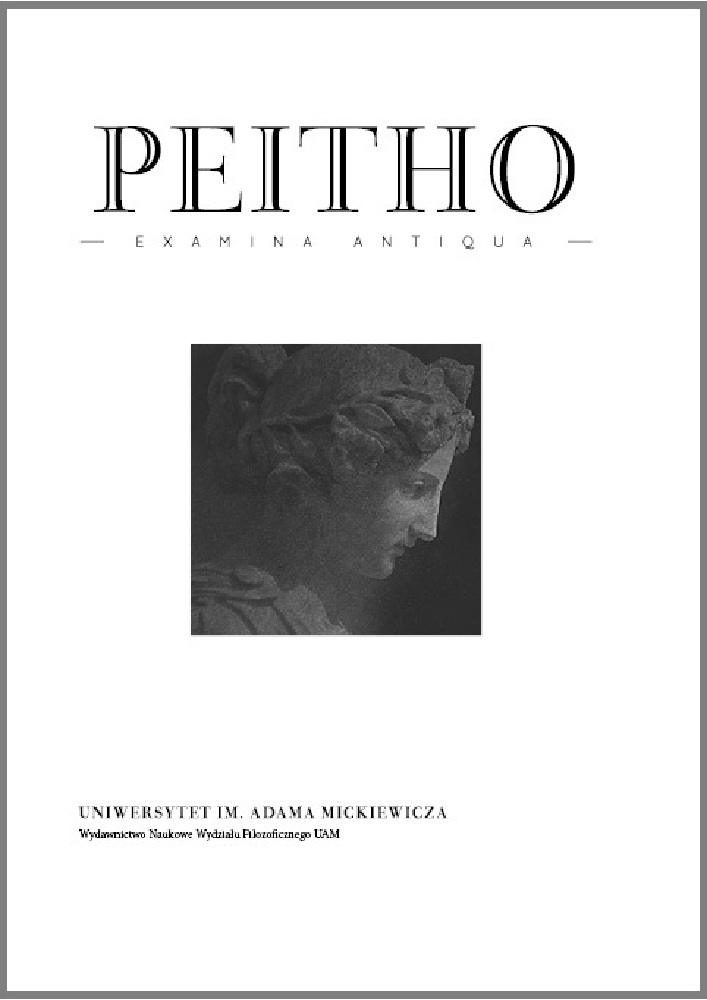Abstract
This article focuses on certain dimensions of Plotinus’ notion of the noetic self, which so far have not received sufficient scholarly attention. The evidence of Enn. V 8 makes clear the assumption about the inexhaustible generativity of the noetic self. This generativity implies an intimate relation with the notions of image and suddenness: the former is intended as a medium of unconditional self-transparency, whereas the latter is understood as pointing to the unlimited newness that is characteristic of the noetic life, which, according to Plotinus, consists in an indissoluble unity of identity and alterity (Enn. VI 7.13). The aforesaid notions make it reasonable to view Plotinus’ concept of noetic self as pointing to a predominantly relational and dynamic ontology, in which essentialism presupposes no staticity whatsoever, but can rather be seen as a perspective that leads to the development of a harmonious and non-narcissistic creativity.
References
Andolfo, M., 2002, Plotino. Struttura e fondamenti dell’ipostasi del Nous, Milano.
Beierwaltes, W., 1977, “Plotins Metaphysik des Lichtes”, in: C. Zintzen (hrsg.), Die Philosophie des Neupla¬tonismus, Darmstadt, pp. 75–115 (originariamente in Zeitschrift für philosophische Forschung 15, 1961, pp. 334–362).
Beierwaltes, W., 2001, Das wahre Selbst. Studien zu Plotins Begriff des Geistes und des Einen, Frankfurt am Main.
Emilsson, E. K., 2007, Plotinus on Intellect, Oxford.
Hedwig, K., Sphaera Lucis. Studien zur Intelligibilität des Seienden im Kontext der mittelalterlichen Lichtspeku¬lation, Münster.
Hutchinson, D. M., 2018, Plotinus on Consciousness, Cambridge.
Lavecchia, S., 2012, “Come improvviso accendersi. Istante ed esperienza dell’Idea”, in: S. Lavecchia (a cura di), Istante. L’esperienza dell’Illocalizzabile nella filosofia di Platone, Milano–Udine, pp. 55–90.
Lavecchia, S., 2017a, “Bild und Seinsschöpfung. Die vorweggenommene Moderne in Plotins Ästhetik”, in: H. Chr. Güther (hrsg.), Kunst im Zwanzigsten Jahrhundert. Zwischen Klassizismus und Moderne, zwischen privatem und öffentlichem Raum, Nordhausen, pp. 51–70.
Lavecchia, S., 2017b, “Luce a se stessa trasparente. Icona e ontopoièsi nell’estetica di Plotino”, Eudia 11, pp. 1–11.
Lavecchia, S., 2019a, “Pensiero, autocoscienza, immagine: un percorso vedico e plotiniano”, in: S. Furlani (a cura di.), Immagini differenti. Problema, natura e funzione dell’immagine nelle altre culture, Milano–Udine, pp. 53–67.
Lavecchia, S., 2019b, “Vita noetica e sfera di luce. Considerazioni su Plotino, Enneade V 8 (31).4.4–11”, in: E. Cattanei, C. Natali, R. Medda (cur.), Studi sul mediplatonismo e il neoplatonismo, Roma, pp. 43–57.
Mortley, R., 2013, Plotinus, Self and the World, Cambridge.
Remes, P., 2007, Plotinus on Self. The Philosophy of the ‘We’, Cambridge.
Szlezák, T. A., 1979, Platon und Aristoteles in der Nuslehre Plotins, Basel–Stuttgart.
Vassallo, Ch., 2009, La dimensione estetica nel pensiero di Plotino. Proposte per una nuova lettura dei trattati Sul bello e Sul bello intelligibile, Napoli.
License
Peitho provides immediate open access to its content on the principle that making research freely available to the public supports a greater global exchange of knowledge.
